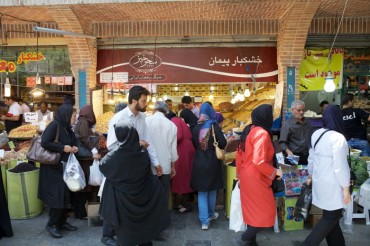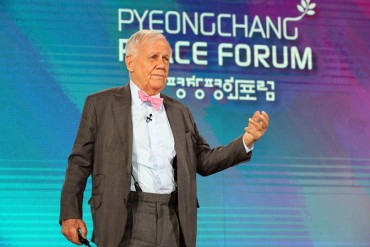
The new trends of Korea in 2014 appear to be heavily individualized experience and convenience using technology. (image: FutUndBeidl @ flickr)
SEOUL, Korea, Nov 11 (Korea Bizwire) - What’s New Trend Inc., a research firm focusing on latest trends in technology and marketing, said the new trends to emerge in 2014 would be like a dumbbell with heavy weights on both sides. T
hat means there will be desire to have extremely individualized experience on one side and longing to have extreme convenience using technology on the other, with the in-between bar called consumer psychology so slim.
Any service that can satisfy neither would be doomed to failure. That’s because consumers have already tasted both of these extremes. For this reason, companies must come up with strategies in 2014 to cater to these picky consumers polarized in two opposing ways.
This characteristic is common to the seven hot trends for the next year picked by What’s New Trend Inc. Let’s take an example of the so-called “endorphin dish” that the research firm predicted to be hot in 2014. This is a trend in the food service industry to be pressured to come up with highly “addictive” food items that appeal consumers’ five senses.
The fad of “Chapa-guri,” the mixture of instant black bean noodle and ramen, this year is just a start toward this direction. Consumers initiating this trend tend to combine the act of eating with recipe information exchange, photo sharing, and shopping like they are one and the same.
How do companies deal with a new breed of consumers like them and profit while doing it? Just like consumers have two extreme tendencies, companies also need two fat weights on both sides of the dumbbell.
A case of Hellmann’s Mayonnaise in Brazil can give you a good insight on this question. The company gives out recipes while at the same time selling jars of mayonnaise. In the beginning, the company held a promotional event in which it printed out recipes with receipts at the cashier. The experimental promotion was a big success, with a 44-percent rise in mayo sales.
Emboldened by the success, the company introduced shopping carts equipped with RFID tags in 2013. When a customer passes by the produce section with her cart, the display on the cart shows how to make salad or other dishes with the given vegetable and mayonnaise.
This was intended for the customer to imagine a scrumptious dish from the raw ingredient. That means the company attempted to provide convenience while allowing the customer to visualize appetizing food, which is precisely a cultural approach.
One such example in Korea is found in a promotion called “Flying Store” at E-Mart organized by Cheil Communications. The truck-shaped balloons up in the air of high-traffic areas such as Time Square Youngdeungpo or Gangnam Subway Station proved to be an effective tool for the retailer.
The balloons with Wi-Fi connection allowed pedestrians below to download special coupons on their smartphones and enter sweepstakes for instant winning. Through this unusual marketing strategy, the online shopping mall of E-Mart could increase its sales 157 percent in one month after the balloon event.
Just like this case, what companies need most to attract the extreme-seeking customers is marketing strategies that mix technology with cultural elements. The keywords for the upcoming 2014 would be “Shake, stir, and mix.”
Lifestyle (Follow us @Lifestylenews_Korea)






